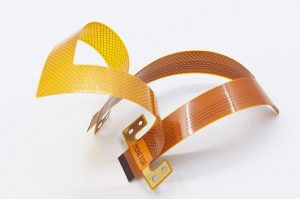What are the typical payment terms offered by flex PCB manufacturers?
typical payment terms offered by flex PCB manufacturers
Rigid-flex printed circuit boards combine the advantages of rigid PCBs with flexible sections to create a hybrid board that is durable, reliable, and cost effective. The combination of rigid and flexible substrates eliminates the need for connecting cables or solder joints, thereby decreasing points of failure and improving reliability. They are also less prone to damage from vibrations, shocks, and bending and are suitable for harsh operating environments.
When selecting a flex pcb manufacturer, it is important to evaluate their capabilities and manufacturing processes. A reputable firm will have in place experienced PCB technicians who can produce high-quality flexible boards that will function as intended. Additionally, they will have a wide range of equipment that can handle various tasks such as drilling tools, imaging equipment, and surface finishing tools.

In addition to having the proper equipment, a good flex PCB maker will have a well-defined set of manufacturing standards. These standards will ensure that the resulting product meets all customer requirements and specifications. For example, they should adhere to IPC-2223 and other relevant quality guidelines. They should also be able to offer quality control services such as flex testing, impedance testing, and thermal testing.
What are the typical payment terms offered by flex PCB manufacturers?
The flexibility of a flex circuit board makes it ideal for small, portable electronic devices. Its ability to conform to different shapes and sizes reduces the size of an overall device and allows it to be installed in tight spaces. However, it is crucial to understand the limits of a flex circuit’s bendability when designing and testing the design. The maximum number of times that a flex PCB can be bent is important, as is the amount of force it can withstand when bending.
A flex circuit is more expensive than a rigid PCB, but it can reduce the weight of a device by up to 60% and save space in packaging and assembly. A flex circuit also provides better electrical performance and reliability. This is because it can withstand vibrations that would otherwise damage rigid or wire harness-based designs and minimizes the likelihood of solder connections failing due to excessive strain.
Another benefit of a flex circuit is that it can be manufactured in very thin layers. This is because the flex circuits are typically cladded with polyimide and plated with electro-deposited or rolled annealed copper. The thickness of the copper can vary from 0.5oz to 2oz. The choice of the thickness will impact the flex circuit’s cost and its ability to conduct current.
When choosing a flexible PCB maker, it is important to know if the company will provide design support and engineering services. The company should be able to review and assist with the design for manufacturability, provide prototypes, and perform flex testing. It is also a good idea to determine whether the company uses panel plating or pad-only plating (button plating).
A reliable flex PCB manufacturer should be able to accommodate customers’ specific needs. They should be able to discuss design parameters, including thickness, etch yields, and the placement of copper features. This will help them make recommendations that will minimize time-to-market and reduce the risk of errors during production.